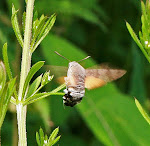Localities for this plant in Britain are rapidly decreasing. At one time it occurred as far north as the Moray Firth but now its northern limit is on the chalk of the Yorkshire Wolds.
.jpg)
.jpg)
.jpg)
It is a plant which prefers warm, well-drained, calcareous soils such as are often found in arable fields, and where changes due to modern agricultural practices have undoubtedly led to its decline. It also occurs on coastal sands and shingle as well as on the fine screes and rubble of limestone and chalk, so that chalk-pits and quarries may sometimes hold significant populations. A brief survey was made at three sites on the Yorkshire Wolds in July 2009. Typical habitat can be seen on steep slopes below.
.jpg)
.jpg)
.jpg)
Near Fimber, a few plants were found on a slope of fine scree, whilst near Langtoft there was a small population in a disused chalk-pit. At Wharram there were several good populations, again on well-drained sloping scree. Here, on the same day, a large party of lepidopterists and conservationists were making an intensive, but unsuccessful, search for the day-flying moth, Chalk Carpet (Scotopteryx bipunctaria) which had been recorded there some years earlier.
.jpg)






No comments:
Post a Comment